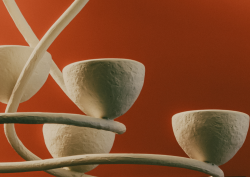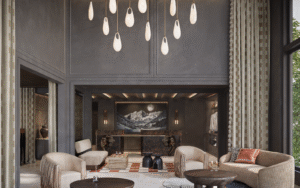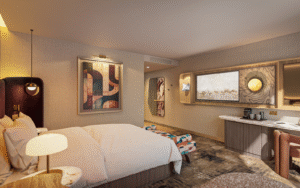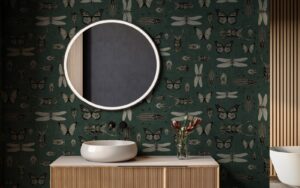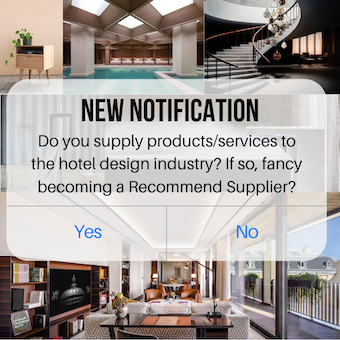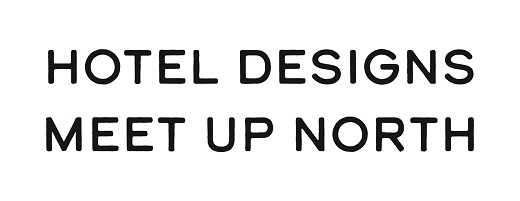Roundtable: Emerging trends in hospitality design
In the quirky setting of The Zetter Clerkenwell, Hotel Designs gathered leading designers for an intimate roundtable discussion, in association with award-winning lighting experts at Franklite Ltd, to explore the future of hospitality design…

Held during Clerkenwell Design Week, the group gathered underground in one of the old cells at the House of Detention to check out the lighting display put on by Franklite and Christopher Hyde before making their way to The Zetter. Hosted by Hotel Design’s editor Sophie Harper, the conversation spanned well-being-led experiences, the shift towards authenticity and locality, the challenge of simplicity in a tech-driven market, and the growing role of AI.
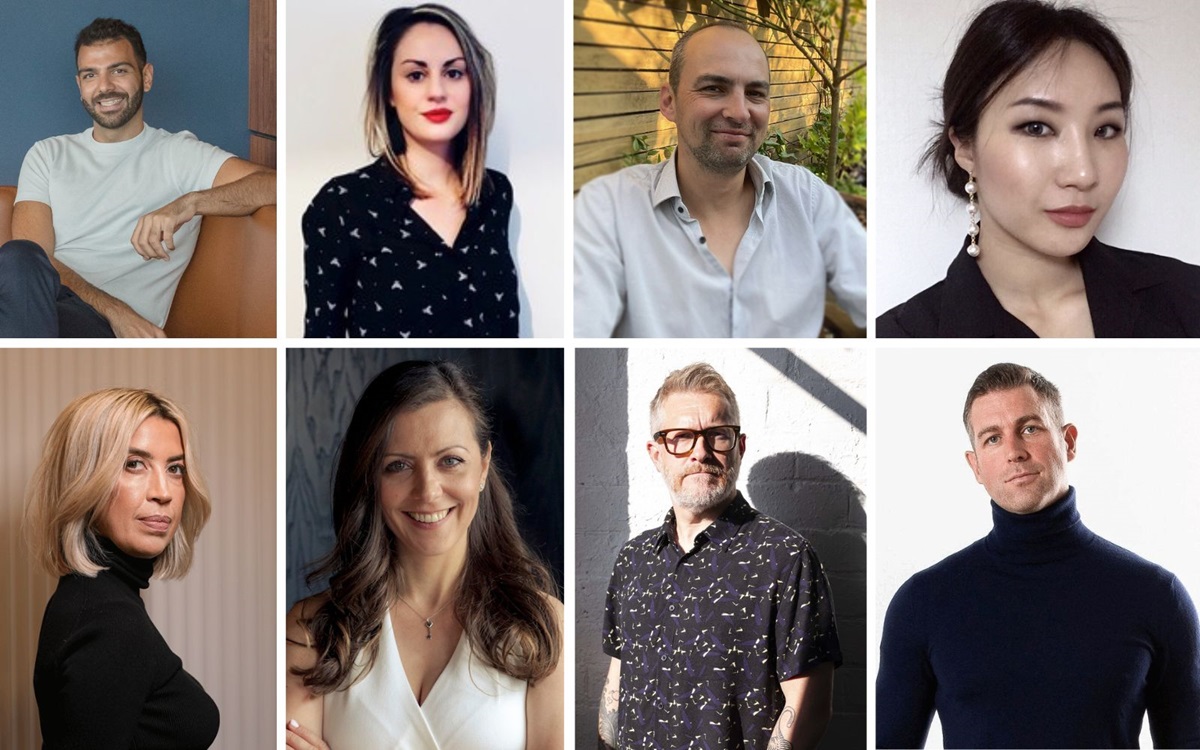
Our design experts in attendance from left to right: Mustafa (Mus) Afsaroglu, Co-founder, Taner’s Sons; Caitriona McGachy, Head of Design, The July; Jeremy Grove, CEO & Design Director, Sibley Grove; Luna Kim, Interior Designer, David Collins Studio; Leanne Armstrong, Creative Director, Black Ivy Design; Una Barac, Executive Director, Atellior; Craig McKie, Creative Director, Bell & Swift; and Dale Atkinson, Founder, Rosendale Design
Sophie Harper: We’re here to talk about emerging trends in hospitality design – what’s evolving, what’s resonating with guests and how we, as an industry, respond to it – and perhaps most importantly, how do we deliver meaningful spaces that endure?
Well-being and the post-pandemic shift
The discussion opened with unanimous agreement: well-being has moved far beyond the spa.
Una Barac: Well-being. It’s not just wellness as your generic spa for a massage. It’s fitness, recovery, mental health and connecting guests with nature.
Una referenced the opening of CYRO, a concept resort where personal trainers and food technicians replace traditional spa services, and outdoor activities – from skiing to sailing – form the core of the guest journey. This evolved understanding of well-being resonated across the table.
Caitriona McGachy: Being flexible with wellness spaces is another consideration – we can open up our wellness spaces for meditation or to accommodate fitness classes. We’re bringing people outdoors and bringing people together as well as connecting with nature.
Leanne Armstrong: That connection to nature is also important in the interior design. Clients want natural materials, tactile finishes and breathable solutions like clay walls – elements that ground guests and cleanse the air.
Mustafa (Mus) Afsaroglu: People are becoming curious about where materials come from, who made them, whether they carry social impact. It’s like food provenance – that same interest is now expanding into interiors.
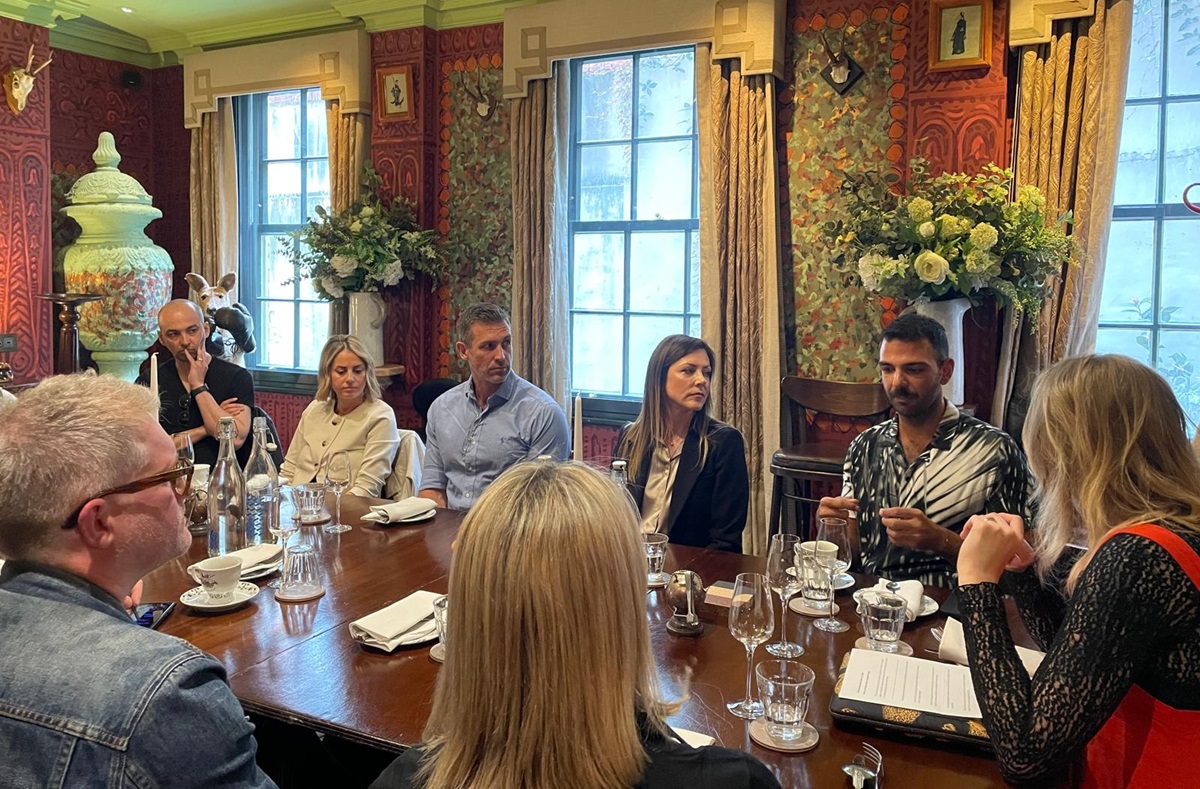
Image credit: Franklite Ltd
Authenticity and locality as the new luxury
The pandemic’s disruption to travel has, many agreed, accelerated a deeper yearning for authentic experiences.
Craig McKie: Luxury has changed, guests want an authentic experience. They want to understand a place’s culture – that’s now part of the definition of luxury.
This manifests in vernacular materials, local artisanship and connections to community.
Una: It’s farm-to-table – but also farm-to-spa. Hotels are using lavender grown on-site for treatments, local produce for kitchens – guests want that sensory link to the locality.
Designers are also rethinking the role of hotels within their communities and are making sure connection and engagement with the property’s immediate surrounding is made as easy as possible.
Caitriona: Hotels can no longer just rely on overnight guests, we partner with local run clubs, open kitchens to solo travellers, host events – it’s about building community formats that serve both guests and locals.
Dale Atkinson: Hotels are now encouraging locals to work from their lounges or pop in for breakfast. That openness makes the hotel part of the community, not just a space for international travellers.
Luna Kim: I think that’s why the lifestyle hotel, boutique hotel, is growing, is in demand, because there are people who like to have a little more personalised services rather than more automated or big-style cooperative hotel.
Simplicity versus technology
As wellness and authenticity rise, so does a counter trend: a growing rejection of overcomplicated technology.
Jeremy Grove: On one side you’ve got brands pursuing highly automated guest journeys; on the other, a rejection of tech in favour of simplicity. Guests are asking, why do I need motorised curtains when a beautifully weighted track works just as well?
Jeremy cited a Georgian manor project where automated curtains were stripped out in favour of hand-operated systems: “It’s about tactility. Guests want well-crafted, effortless products – not a wall of switches they can’t decode.”
Franklite’s Head of Hospitality confirmed the shift from the manufacturing side.
Carly Fitzgerald: The trend is going back to basics. At one point everyone wanted charging plates and automated controls – now they’re asking for simple on-off options and pull cords.
At the same time, other voices championed convenience.
Mus: As a guest, I like a panel next to the bed with all the moods clearly labelled. Part of the hotel experience is enjoying conveniences you might not have at home.
Sophie: The challenge is you can’t please everyone. But perhaps that’s the point – distinct brands with distinct approaches will resonate with distinct audiences.

Image credit: Franklite Ltd
Sustainability beyond lip service
The table agreed sustainability is now a non-negotiable consideration, but Jeremy urged caution.
Jeremy: There’s a lot of lip service. Sustainability becomes a moral argument, but budgets always drive decisions. We focus on quality: if you specify a better-made product from a responsible source, it will last.
Franklite’s Director, Mark Lissauer, highlighted the tension between cost and environmental goals.
Mark Lissauer: We can recycle and refresh 14-year-old fittings for clients, but it costs more than buying new. Will operators invest? It’s a fascinating case study.
Jeremy: Hotel operators want to be able to change a bulb themselves. Integral LEDs create downtime if they fail – we have to design with longevity in mind.
The art of first impressions
The group stressed the importance of arrival sequences, especially in an era where lobbies must balance check-in, co-working and community.
Dale: You never get a second chance at a first impression. Even a budget hotel can make an impact with colour, flow and clarity. Guests need to know instantly where the bar and reception are.
Una: We’re moving away from tall reception desks – barriers – towards smaller pods or informal sit-down check-in. It’s about breaking down boundaries.
The table discussed how crucial lighting is to the role of welcoming guests and distinguishing between different areas in a hospitality space.
Leanne: It’s all about layers, shadows, hidden elements – that’s where we have fun as designers.
Carly: You can create bright and bold for daytime, then low-lit intimacy at night – but it shouldn’t require a PhD to operate.
Collaboration and storytelling
When asked what makes a great supplier, the group emphasised partnership.
Jeremy: The best projects are about teamwork, and that extends to suppliers. We want technical support and we want to know you understand the product. That’s why roundtables like this matter.
Storytelling – both in design and in how suppliers present themselves – was another recurrent theme.
Luna: Everyone can make beautiful lighting, but we need to know the narrative behind your brand – the craftsmanship, the artisans – that’s what makes us choose you.
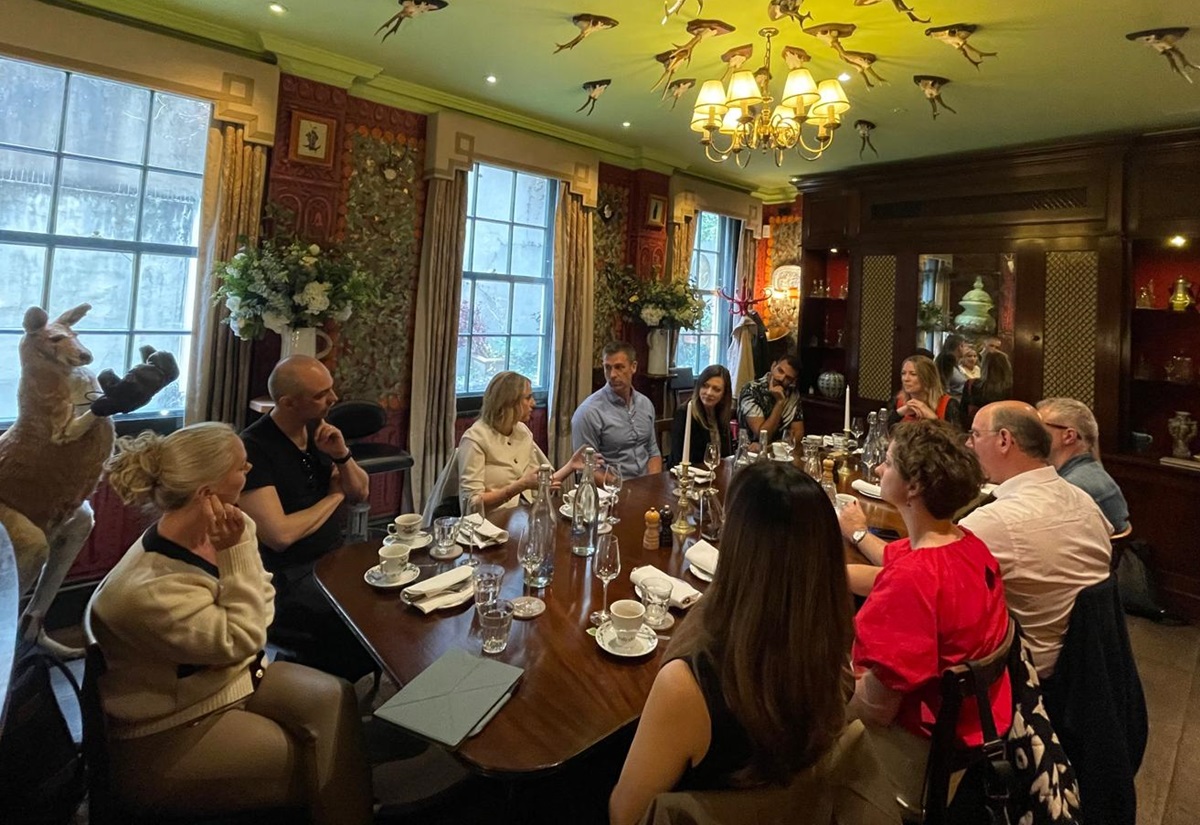
Image credit: Franklite Ltd
Looking ahead: authenticity, transparency and AI
Closing the discussion, Sophie asked the group to predict where the industry is heading.
Leanne: Authenticity and transparency are key. Guests are more discerning than ever – they’ll see through gimmicks.
Dale: We try to deliver honesty. People can smell Disneyland from a mile away. If a hotel’s narrative doesn’t align with its design, it won’t resonate.
The final topic – inevitably – was AI. The group saw it as a tool rather than a threat.
Craig: We did some stuff for the HIX exhibition, and it was all about me, myself, and AI, which was quite fun. We generated a few different things using AI – the skill is knowing exactly what to put in to get the right result. It was interesting, but ultimately it has to be a person behind anything that comes out of AI.
Leanne: You have to embrace it, find how it works for your studio. It won’t replace human creativity, but it can speed up processes like concept imagery.
Jeremy: Designing a hotel is complex. Clients want to be part of the journey. AI won’t replace that – it just means we need to remain relevant, adapt our processes, and carve a niche.
As the session drew to a close, Mark Lissauer reflected on the purpose of such conversations:
Mark: We need to remind people what we do and how we can collaborate. Trends come from the design community – you drive what we deliver.
Key takeaway? Hospitality design is entering an era of heightened expectation. Guests want meaningful wellness, authentic narratives and simplicity amid the noise. Operators want flexibility, longevity and community. And designers are tasked with reconciling it all – with manufacturers like Franklite helping illuminate the way forward.
Franklite is one of our Recommended Suppliers and regularly features in our Supplier News section of the website. If you are interested in becoming one of our Recommended Suppliers, please email Katy Phillips.
Main image credit: Franklite Ltd






